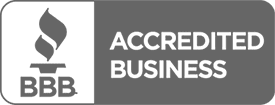Career Outlook
Across American Academy of Professional Coders™ (AAPC) membership, medical coders (certified and non-certified) earn an average salary of $54,890, up 5.8% from last year’s average salary of $51,889. Medical coders without certification earn approximately $42,015 per year while certified professional coders on average earn $55,923 annually—33% more than their non-certified colleagues. This calculation includes all certifications attained through AAPC, AHIMA, and other organizations. The average salary solely for AAPC-certified professionals is 8.7% higher.
Pay continues to climb for medical coding certification. The salary for health information technicians with two credentials rises to an average of $64,890. Billing and coding specialists with three or more credentials earn approximately $70,608 per year.
Administrative assistants who work in medical offices do important work. This importance is reflected in a dramatic rise in demand for qualified medical assistants. In fact, the U.S. Department of Labor predicts 29% job growth in this field by 2028*. That’s more than four times faster than the average job growth for all occupations in all industries.
*Bureau of Labor Statistics, U.S. Department of Labor, Occupational Outlook Handbook, Medical Assistants, on the Internet at https://www.bls.gov/ooh/healthcare/medical-assistants.htm (visited July 13, 2020).







